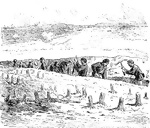The 1861-1865 Civil War Land Battles ClipArt gallery offers 270 illustrations of land battles that were fought between the Union and the Confederacy during the American Civil War.

Vicksburg during the Civil War
The Vicksburg Campaign was a series of maneuvers and battles in the Western Theater of the American…

Advance to Vicksburg
"Skirmishing in the woods, on the advance to Vicksburg. Our artist presents a most beautiful scene,…

Cave Life in Vicksburg
During the siege, Union gunboats lobbed over 22,000 shells into the town and army artillery fire was…

Porter's Fleet Shelling the Batteries Vicksburg
Union forces bombarded the city all night, from 220 artillery pieces and naval gunfire from Rear Adm.…

Siege of Vicksburg
"Siege of Vicksburg- the fight in the crater of Fort Hill after the explosion, June 27th, 1863. Our…
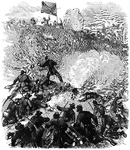
Siege of Vicksburg
"Siege of Vicksburg- General Sherman's fight with hand grenades, June 13th, 1863. On the 13th of June…

Siege of Vicksburg
"Siege of Vicksburg-the Twenty-third Indiana and Forty-fifth Illinois Regiments, Leggett's Brigade,…

War in Virginia
"The War in Virginia. Capture of three Confederate guns, near Culpepper, by General Custer's cavalry…

War in Virginia
"The war in Virginia- officers and men of Meade's army discovering unburied Federal dead on the old…
War in Virginia
"The war in Virginia. Battery on the left of the enemy's line, in front of Petersburg, captured by the…

War in Virginia
"The war in Virginia- Confederate signal station near Beverley Ford."— Frank Leslie, 1896

War in Virginia
"The war in Virginia. General Butler's lines south of the James, Va., with troops in position near the…

War in Virginia
"The war in Virginia--railroad bridge over the Rappahannock, at Rappahannock Station."— Frank Leslie,…

Battle of White Oak Swamp Bridge
"Battle of White Oak Swamp Bridge, Monday June 30th, 1862- Ayres's, Mott's and Randall's batteries checking…
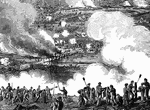
Battle of White Oak Swamp Bridge
"Battle of White Oak Swamp Bridge, Monday June 30th, 1862- Ayres's, Mott's and Randall's batteries checking…

Battle of White Oak Swamp Bridge
"Battle of White Oak Swamp Bridge, Monday June 30th, 1862- Ayres's, Mott's and Randall's batteries checking…
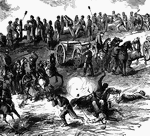
Battle of White Oak Swamp Bridge
"Battle of White Oak Swamp Bridge, Monday June 30th, 1862- Ayres's, Mott's and Randall's batteries checking…
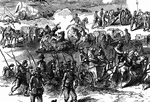
Battle of White Oak Swamp Bridge
"Battle of White Oak Swamp Bridge, Monday June 30th, 1862- Ayres's, Mott's and Randall's batteries checking…
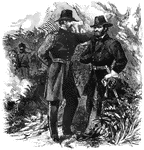
Battle of the Wilderness
"An incident of the Battle of the Wilderness. Lieutenant General Grant and Major General Meade in consultation,…

Battle of the Wilderness
"The battle of the Wilderness, between General Grant and General Lee, May 5th and 6th, 1864. Our sketch…

Battle of Williamsburg
"Battle of Williamsburg, Va., on the peninsula between York and James Rivers, May 6th, 1862. General…

Battle at Willis Church
"Battle at Willis Church, Monday, June 30th, 1862- the Federal forces, under General Heintzelman, engaged…

Battle at Willis Church
"Battle at Willis Church, Monday, June 30th, 1862- the Federal forces, under General Heintzelman, engaged…
Winchester Charge
"Sheridan's Campaign. Battle of Winchester- charge of Crook's Eighth Corps, September 19th, 1864- the…

Battle of Winchester
"Battle of Winchester, VA., March 23rd, 1862- decisive bayonet charge of the Federal troops, led by…
Battle of Winchester
"Sheridan's Campaign- Battle of Winchester- position of the Nineteenth Corps, General Emory, September…

Major Zagonyi
"Second charge upon the Confederates by General Fremont's bodyguard, under Major Zagonyi, near Springfield,…

